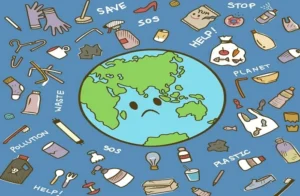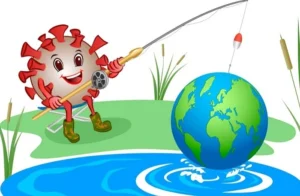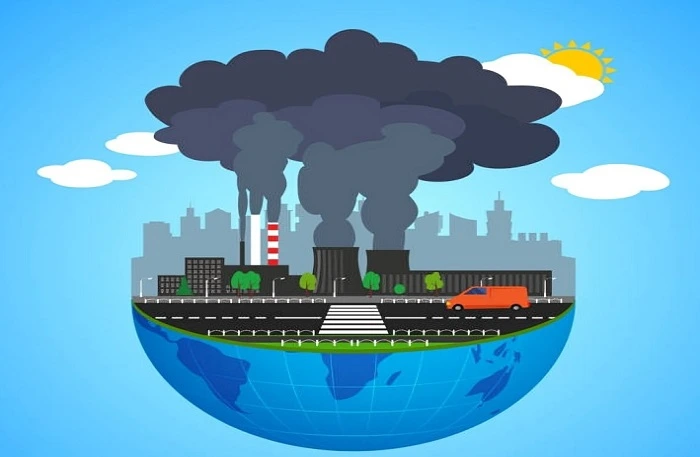Think about living in a world where the woods aren’t green but bare because of smog and the oceans aren’t clear blue. It’s not just an artist’s fear, pollution has made it a harsh truth for all of us. As a member of the Contaminated World Draw movement, you can use these sad facts to make strong art.
This creative project uses vivid colors and imaginative lines to show pollution around the world in a way that words often can’t. We are asked to think about it, respond, and maybe even get excited about protecting our world again. We’ll talk more about what makes the Contaminated World Draw so interesting and how it both shows and urges people to stop damaging the environment.
Explanation of global pollution and its effects on the environment
Pollution around the world is a serious problem that shows up in many ways, such as polluting the air, water, and land. A lot of the pollution that causes this problem comes from factories, cars, and bad waste management.
Pollution has very bad effects on the earth. The air quality is getting worse, which is bad for people and animals’ health. Polluted bodies of water can mess up aquatic environments and make sources unsafe to drink. Pollutants break down the earth as they seep into it. This not only hurts farms, but it also changes wildlife’s homes, which is bad.
Along with that, pollution that releases greenhouse gases speeds up climate change. It is getting warmer, which makes natural processes even less steady and leads to extreme weather. The delicate balance of our world is affected by everything we do. Being aware of this threat is very important if we want to make real changes to stop it.
How the Contaminated World Draw highlights this issue through art

The Contaminated World Draw takes the idea of art as a strong way to express yourself to a whole new level. It turns harsh facts into powerful images that people can relate to.
Artists show what pollution does to our world by using bright colors and scary images. Every piece has its own story to tell about things like air pollution, plastic waste, or cutting down trees. Art makes people think about these problems in a direct way.
By showing both sad and hopeful scenes, it starts conversations about taking care of the world. Artists do more than just show problems, they also try to make people want to change things.
Drawings can make people feel something, which can inspire them to do something in their neighborhoods. This unique method connects the two, raising awareness and taking action, making the need to stop global pollution real and personal.
The process of creating a Contaminated World Draw
Finding ideas is the first step in making a Contaminated World Draw. Artists often look at their surroundings and notice how different the beauty of nature and the effects of people are. They collect things that show pollution, like used plastics, smoky air filters, or even pictures of areas that have been destroyed by pollution. This hands-on method makes the link to the problem at hand stronger.
The next step is to sketch. Drawing lines doesn’t just show the truth, it can also make you feel something. Every move makes you think about what you’ve lost and what you can still get back. Color is also very important. Dark colors show ruin, while bright colors show places that haven’t been polluted yet. These colors work together to tell a story of difficulty and hope.
By showing their work in galleries or online, artists invite people into this contaminated world. Each piece starts a conversation, which raises knowledge about pollution around the world and the need to act right away.
Examples of powerful and thought-provoking Contaminated World Draws

A beautiful example of a Contaminated World Draw is a scene from beneath that is full of color. It’s shocking to see the bright fish swimming in the trash, but it works. There is beauty and sadness in this piece of art.
In a different powerful piece, trash and smoke have choked out a forest that used to be lush. We can see what we could lose if we don’t do something about the air pollution in the scary pictures. In a less clear picture, the forms of people are mixed in with colors that swirl and look like garbage in the air. It makes me think about how much we change nature by what we do.
When people see these works of art, they talk about duty and change. They make people think about what they can do to help solve the issue and also use their imaginations to get people to act.
Impact and potential solutions for global pollution through art and awareness
Art has the power to make people want to make changes. This drawing, “Contaminated World,” makes pollution look really bad and like a plea for help. People talk about each piece and think about what they can do to make the world a better place.
Touching people in the heart through art can make them do something. Through workshops and group projects based on the Contaminated World Draw, people can work together to clean up the world and support practices that are good for the environment. A lot of people share these ideas on social networks. By sharing their work online, artists can get it seen by more people.
Scientists and artists can work together to find new ways to solve issues. They can make ads together that show how simple it is for everyone to buy eco-friendly products and return. Society that wants to keep the Earth healthy for future generations is made up of people who are active and people who make things.
Conclusion
The Contaminated World Draw is a great way to get people to care about pollution around the world. It shows us the harsh facts of our world through art and starts important conversations. Not only is each piece beautiful to look at, but it also makes you think.
As we try to figure out how to handle this complicated problem, artists are the only ones who can make abstract ideas real. People who see them are asked to think about their own habits and how they hurt the world. This thought process can lead to changes that matter.
We can get more people to see these drawings by putting them up in public places or on the web. Even more people can join the conversation when artists work with groups in workshops or exhibitions.


